Having created incredible, but invisible, visual effects for Steven Spielberg’s War Horse, Framestore returned for Lincoln, the director’s take on the President’s efforts to have the Thirteenth Amendment passed by the United States House of Representatives. We sat down in London with visual effects supervisor Ben Morris and CG supervisor Mark Wilson to discuss some key shots from the film.
Abe’s dream
Framestore contributed several concepts to Lincoln’s dream sequence, the origins of which were the President’s actual diary entries. “Lincoln was very clear about what he saw,” says Ben Morris. “He described being on the deck of an ironclad boat – the USS Monitor – moving at incredible speed heading towards a coastline that he can never reach – it keeps eluding him. It’s a metaphor ultimately for the Thirteenth Amendment and his second term.”
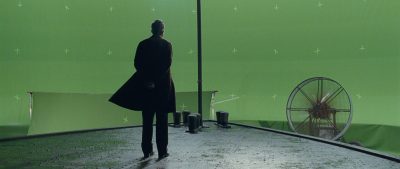
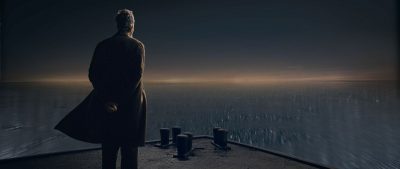
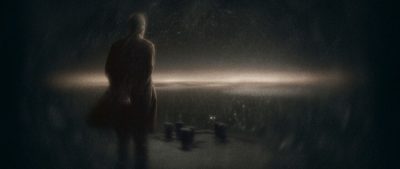
Lincoln actor Daniel Day-Lewis was filmed, literally on the last day of shooting, in front of a greenscreen on a 25 foot boat deck, with a fan employed to provide some sense of movement. Framestore would then use the plate to carry out a number of tests and iterations before arriving at a suitable look. “The most difficult aspect of that shot design was trying to develop a photographic ‘look’ to apply to the clean plates,” recalls Morris. “It had to have a sense of dreaminess, but also convey speed in the relative darkness of night.”
To help create a sense of speed, artists developed both a moving starfield (something Spielberg initially dubbed the ‘star gate’, according to Morris) and various water passes that reference the glass-like surface described in Lincoln’s diary. “You then get the problem of how do you convey great speed if the water surface is flat like a mirror, because you don’t see any structure on the surface,” adds Mark Wilson. “In the end we did lots of CG water sims, refracting the plate through them, layering up lots of effects. They were all pulled together in Nuke and mixed with live action elements. Steven wanted the feeling of it being filmed through water, not necessarily being underwater, but almost like developing a picture.”
A further aspect of the dream sequence was that it had to appear photographic, as if recorded using technology from the time. That manifested itself in vignetting, differing frame rates and camera weave – something Framestore looked to practical reference to achieve. “We went so far as to investigate what vaseline would look like when smeared on a lens,” says Morris. “We went into one of our theaters and made an huge rostrum camera – we got a Canon 5D with a clear UV filter on the lens, smeared vaseline all over it, and photographed our cinema screen as we manually advanced the shot frame-by-frame. The resultant footage informed the look of the final comps of the entire sequence.”
Incorporating this look of a being filmed through a vintage lens, the shots were ultimately comped in Nuke. “We’ve got a huge element library and we delved into that too,” notes Morris. “We’d take say a real element and then do a radial twist on it to get a rotational movement. It was a real mish-mash of techniques for the dream sequence.”
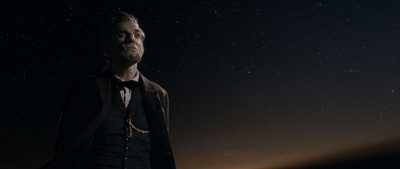
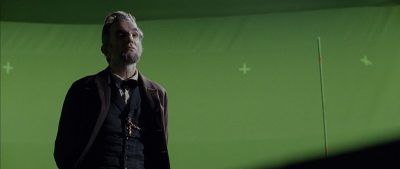
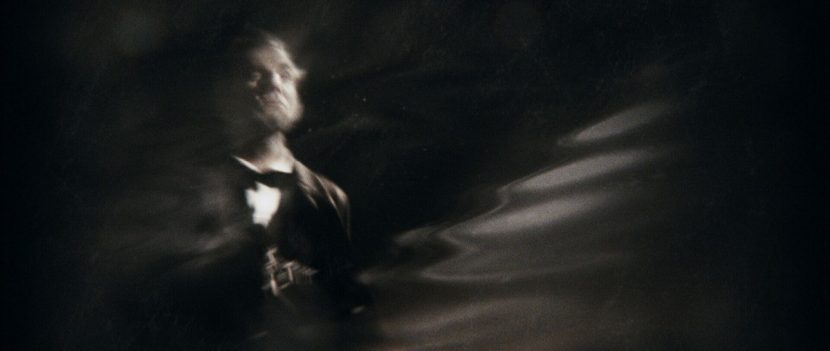
Attack on Petersburg
Aboard the Malvern, Lincoln witnesses Petersburg under attack from his forces. Framestore crafted a CG river, banks and the burning city – using both live action elements and digital fire and smoke.
As originally designed, the shot was to be a matte painting. “But Steven got more and more excited about it,” says Wilson. “With a matte painting you tended to get more and more silhouettes but not really the depth and 3D feel of it. When we actually built and rendered the city it felt more photographic.”
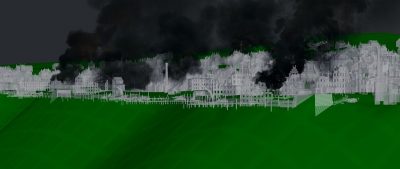
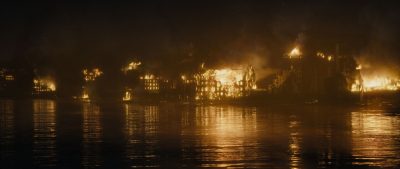
The river surface relied on Framestore’s Tessendorf displacement shaders. Destruction of the buildings was realized with Framestore’s in-house version of the Bullet solver called fBounce. Houdini was then used for the fire sims. The shot was rendered in Arnold, and augmented with live action elements like additional smoke and fire. “Actually, some of the explosions in there are elements from War Horse,” notes Morris. “As you bring a shot together like that, we really just kept adding ideas. I think the mixture of CG and real elements give the shot a real, textural feeling”.
The Capital Building
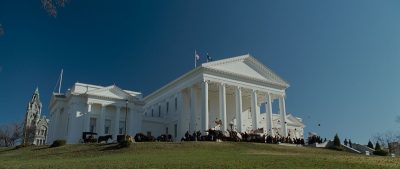
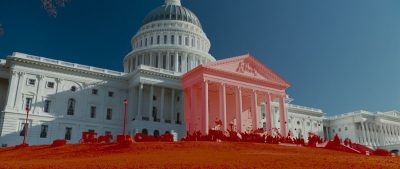
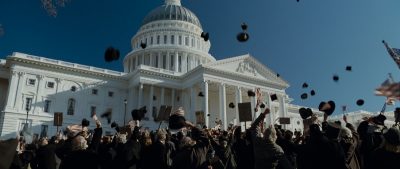
Doubling as the Capital Building was the Virginia State Capital in Richmond, often used in films to double as its Washington counterpart. Framestore made a number of alterations to the building for key scenes occurring outside, including Lincoln’s famous second inaugural speech in 1865.
“The production designer Rick Carter always hoped that he could use the front section of this building,” notes Morris. “And he did – we shot a lot of action there in-camera. We were on-hand to assist in wide shots of the Virginia Capital which needed CG extensions.”
To aid in the digital add-ons, Morris visited the Capital Building in Washington to acquire stills photography for photogrammetry reconstruction, since the real building could not easily be scanned. “Historically, LIDAR has played a big part in everyone’s lives,” says Morris, “but we’ve got some new in-house tools that let us actually go and shoot flat or spherical images for photogrammetric scene reconstruction. We used a combination of Photoscan and ImageModeler to reconstruct the Washington Capitol.”
The CG build began with an initial test using a Capital Building stock model to see if it would line up with the Virginia version. When that looked promising, Framestore embarked on a fuller build with the photo reference. “What’s great about the photogrammetry approach is that you can photograph as much as you like with as many close-ups, essentially a load of pictures,” explains Wilson. “Then based on the shots you need, you can process the parts you need rather than going through the LIDAR which requires dense data. But with photogrammetry to actually capture your source material, you’re just clicking away with a camera. It’s very quick and easy to do.”
The final building was rendered in Arnold, with Framestore also contributing crowd replication and extensions for the speech and other scenes at the Capital.
Even more invisible effects
Framestore’s other Lincoln contributions are an array of seamless effects additions, fixes and wizardry. Here’s a rundown of how the studio helped tell Spielberg’s story.
Carriage clean-up – in one shot of a carriage door opening, a member of the lighting crew obscures Hal Holbrook’s face in the reflection of the window. Framestore re-constructed the plate to match a different take of the scene.
The Oscar effect – read fxguide’s coverage of some of the other films nominated for a Best Picture Oscar this year:
Argo
Les Miserables
Life of Pi
Zero Dark Thirty
And you can also hear Lincoln DOP Janusz Kaminski, ASC on the rc podcast here.
In the mirror – A scene of Lincoln’s wife Mary, played by Sally Field, talking with her husband in their bedroom made use of a large mirror. As the shot plays through, the reflection of the camera team was caught in the background, requiring a extensive paint out and scene reconstruction. “It’s through a murky mirror with no keyable elements,” says Morris. “We roto’d Sally Field in the foreground and reflection, taking all the scum off the surface of the mirror and any over Sally’s reflection. We then re-built the room in the reflection behind her, and tracked it back in using a 3D track rather than just a 2D drag through, re-applying new dirt and aging to the surface of the mirror. It’s a classic invisible shot.”
Artifact removal – Although the production filmed in Petersburg to take advantage of its period buildings, certain modern-day artifacts such as powerlines and background elements were unavoidable. In one scene following Lincoln in a carriage, Framestore removed a radio mast and numerous telephone poles and wires, relying on photo reference taken of the surrounding buildings to do the clean-ups, and also added in the Capital dome at the end of the street.
Bloody battle – For muddy battle shots, stuntmen performed the opening scene for hours on end, with Framestore carrying out a bayonet and weapon enhancements and blood removal/additions.
